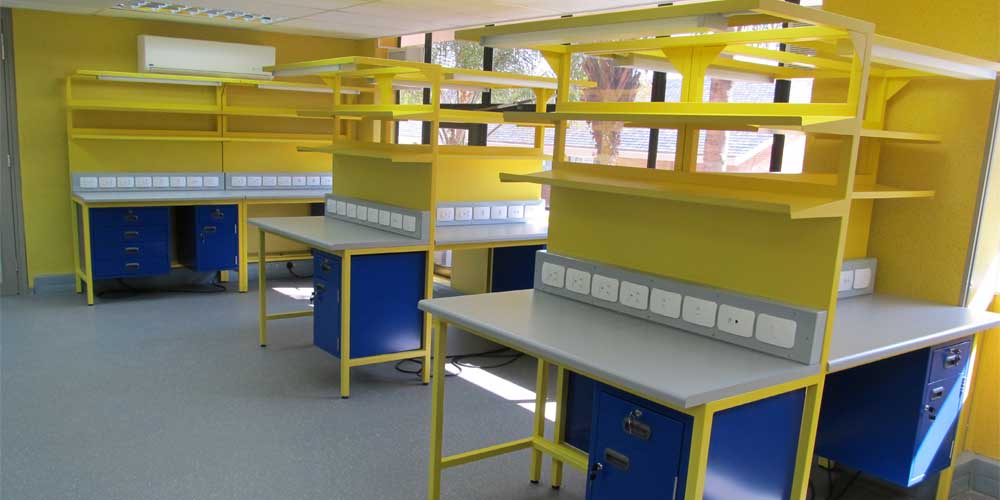Laboratory furniture plays a crucial role in the functionality, safety, and efficiency of a laboratory. The selection of appropriate laboratory furniture is vital for creating a productive and secure working environment. Here are some key reasons highlighting the importance of laboratory furniture selection:
1.Safety: Safety is a top priority in laboratories where various hazardous materials and processes are involved. Properly designed and selected laboratory furniture can contribute significantly to the safety of researchers and other personnel. For example, chemical-resistant countertops, flame-retardant materials, and well-ventilated fume hoods are essential features that protect individuals from potential hazards.
2.Functionality and Efficiency: The layout and design of laboratory furniture impact the workflow and efficiency of daily tasks. Well-designed workbenches, storage solutions, and ergonomic seating contribute to a comfortable and functional workspace. Efficient laboratory furniture also aids in organizing equipment and supplies, reducing the risk of contamination and improving overall productivity.
3.Flexibility and Adaptability: Laboratories often need to accommodate changing equipment, technologies, and research needs. Selecting modular and adaptable laboratory furniture allows for easy reconfiguration and adjustment to evolving requirements. This flexibility ensures that the laboratory can adapt to new research projects or changes in equipment without the need for a complete overhaul of the furniture.
4.Durability and Longevity: Laboratory furniture is subjected to rigorous use and exposure to various chemicals, making durability a critical factor. Choosing furniture made from high-quality, durable materials ensures a longer lifespan, reducing the need for frequent replacements and maintenance. This, in turn, helps manage costs over the long term.
5.Compliance with Standards: Laboratories must adhere to safety and regulatory standards to ensure the well-being of personnel and the integrity of research. The selection of laboratory furniture should align with these standards, such as those set by organizations like the Occupational Safety and Health Administration (OSHA) or the National Fire Protection Association (NFPA).
6.Contamination Control: Laboratories deal with sensitive experiments and analyses, making contamination control a priority. Properly designed laboratory furniture with smooth, non-porous surfaces is easier to clean and maintain, minimizing the risk of contamination in experiments and research.
7.Cost-Efficiency: While upfront costs may be a consideration, investing in high-quality laboratory furniture can lead to long-term cost savings. Durable and well-designed furniture requires less frequent replacement and maintenance, ultimately reducing the total cost of ownership.
In conclusion, the selection of laboratory furniture in South Sudan is a critical aspect of laboratory design and management. It directly impacts the safety, functionality, and efficiency of the laboratory, contributing to the success of research activities and the well-being of laboratory personnel.


No comments yet